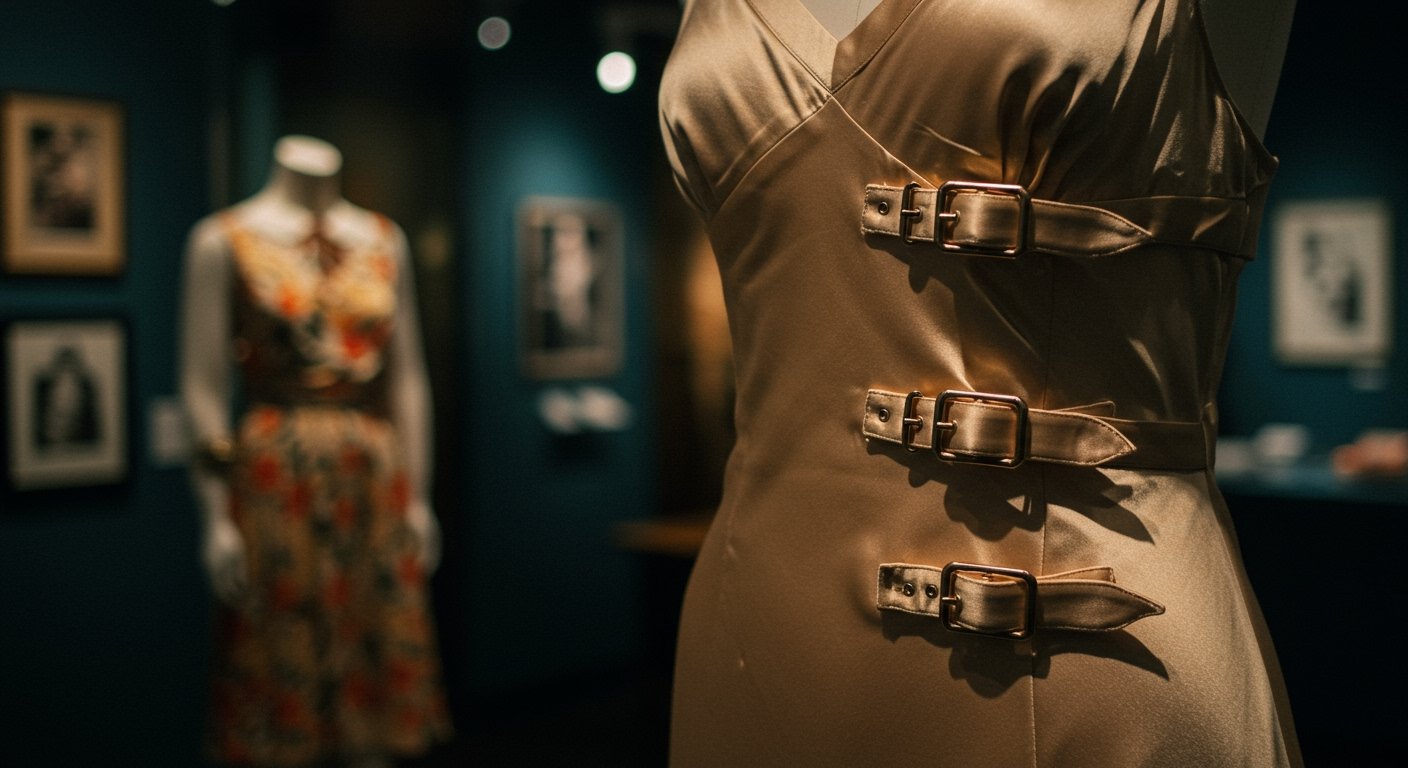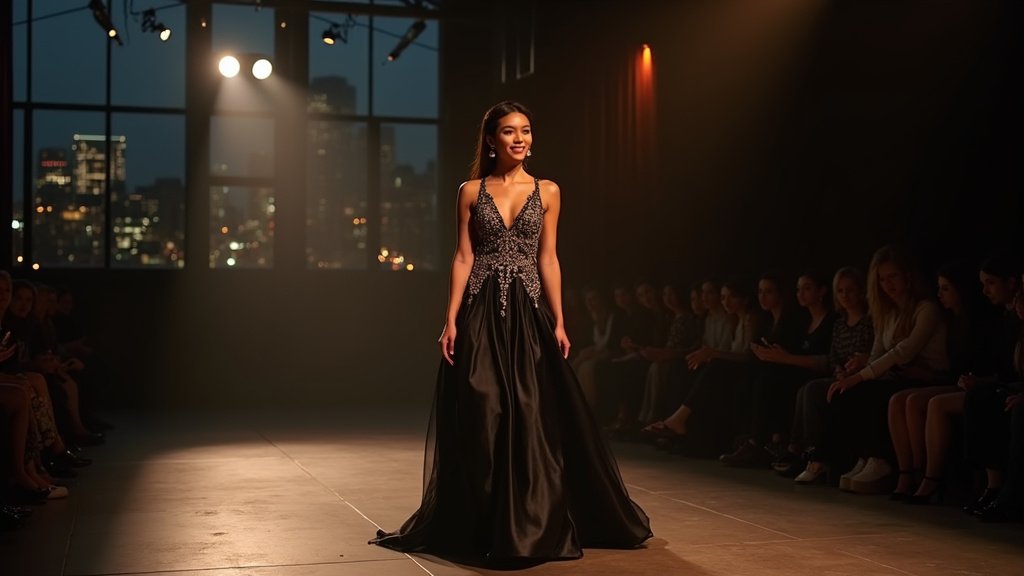A recent essay published in the Summer 2025 issue of Portland Monthly delves into a deeply personal quest that ultimately illuminates a significant chapter in Portland’s modern design history. Written by Carmel Breathnach, the piece chronicles a nearly two-decade journey intertwined with the story of a single vintage dress, acquired in 2008 for a wedding held in Ireland. What began as a simple purchase transformed over time into an introspective search, leading the author back to the roots of a creative movement on NW 23rd Avenue and culminating in the dress itself achieving recognition in a museum exhibition. The narrative offers a unique perspective on how personal artifacts can serve as vessels for cultural memory, connecting individual experience to broader historical trends in local art and fashion.
The Origin: A Defining Portland Boutique
The dress central to Breathnach’s narrative was purchased in 2008 from Seaplane, a boutique that, at the time, was an integral part of Portland’s vibrant retail landscape. Situated on the bustling NW 23rd Avenue, a street known for its mix of shops and eateries, Seaplane stood out. The author discovered a silky champagne-colored dress featuring distinctive buckles within its curated collection. Noteworthy was the garment’s label, which identified it as a piece by Holly Stalder, one of the boutique’s co-founders and a key figure in the city’s fashion scene.
Seaplane was established at the turn of the millennium by local designers Holly Stalder and Kate Towers. They envisioned the space as more than just a retail store; it became a nexus for independent design and artistic expression. Their efforts quickly garnered attention, and they were notably recognized by early 2000s writers as pioneers of Portland’s Y2K fashion scene. This recognition underscored their influence in shaping the city’s aesthetic identity during that transitional period. The boutique served as a tangible representation of a burgeoning local design community focused on originality and independence. By 2008, the year the dress was purchased, Stalder and Towers had sold Seaplane. The boutique has since closed, adding a layer of historical significance to the garment purchased there, positioning it as a tangible link to a specific moment in the city’s past.
Pioneers of Y2K Fashion: A Unique Approach
Holly Stalder and Kate Towers distinguished themselves within the early 2000s fashion world through practices that were both innovative and deeply rooted in a DIY ethos. Their approach to design and retail reflected a conscious move away from mainstream fashion norms. They were particularly known for hosting DIY fashion shows, events that provided independent designers with crucial visibility and fostered a sense of community and experimentation. These shows often took place in unconventional venues, further solidifying their reputation for creativity and breaking traditional boundaries.
Equally central to their identity was the practice of selling reassembled garments. This involved repurposing existing clothing or textiles into entirely new pieces, showcasing a commitment to sustainability and individual craftsmanship long before these concepts gained widespread traction. This method not only produced unique, one-of-a-kind items but also highlighted a resourceful and environmentally conscious aspect of their work. Early 2000s writers recognized these practices as fundamental to their pioneering status within Portland’s Y2K fashion scene, marking them as figures who actively shaped a distinct local style characterized by independence, creativity, and a hands-on approach to design.
A Nearly Two-Decade Search for Connection
Carmel Breathnach’s personal connection to the silky champagne-colored dress with buckles by Holly Stalder, acquired in 2008 for a wedding in Ireland, became the catalyst for an extended exploration. Her essay in the Summer 2025 issue of Portland Monthly details this nearly two-decade search. This was not necessarily a continuous, frantic hunt for a lost item, but rather a prolonged journey of reflection, research, and deepening appreciation for the dress’s origins and the context of its creation. The passage of time since 2008 allowed for a perspective shift, prompting her to investigate the history of Seaplane, the boutique on NW 23rd Avenue where it was found, and the stories of its founders, Holly Stalder and Kate Towers. This personal quest to understand the garment’s place within the narrative of Portland’s early 2000s fashion scene underscores how material objects can hold layered meanings, revealing connections between individual lives and broader cultural movements.
From Personal Wardrobe to Museum Exhibition
The enduring significance of the dress and Carmel Breathnach’s dedication to exploring its history have culminated in a remarkable outcome: the inclusion of the garment in a museum exhibition. This transition signifies the dress’s recognition as more than just a personal item; it is now regarded as a piece of cultural heritage, representing a specific era and the innovative work of local designers like Holly Stalder. The exhibition acknowledges the role of boutiques like the former Seaplane on NW 23rd Avenue as incubators of creativity and highlights the lasting impact of pioneers such as Stalder and Kate Towers on Portland’s Y2K fashion scene. The journey of this silky champagne-colored dress with buckles, from a specific purchase in 2008 for an event in Ireland to its place within an institutional collection, underscores the value placed on independent design, local history, and the narratives embedded within vintage clothing. It serves as a powerful example of how personal stories connected to material objects can contribute to a broader understanding and preservation of cultural history.
Carmel Breathnach’s essay in the Summer 2025 edition of Portland Monthly provides a compelling case study in how personal history intersects with local artistic legacy. Through the story of one particular dress, purchased in 2008 from the now-closed Seaplane boutique, it highlights the important contributions of designers Holly Stalder and Kate Towers to shaping Portland’s distinct Y2K fashion scene at the turn of the millennium. The author’s nearly two-decade search connected her deeply to the history of the boutique on NW 23rd Avenue and the innovative practices of its founders. The ultimate inclusion of the dress in a museum exhibition validates its significance not only as a personal relic but also as a tangible artifact representing a pivotal period in the city’s independent design movement, demonstrating the enduring power of clothing to tell stories across time.




